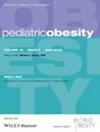The long-term effects of a school-based intervention on preventing childhood overweight: Propensity score matching analysis within the Generation R Study cohort
Abstract
Background
This study investigated the long-term impact of the primary school-based multicomponent lifestyle intervention “Lekker Fit!” (LF) on obesity-related outcomes, and studied whether the impact differed between population subgroups.
Methods
Children from the Generation R Study (Rotterdam, the Netherlands) were categorized into the LF group (6 years exposure, between the ages 6/7 to 12/13 years) or regular school group (no exposure). BMI and DXA-derived fat mass were assessed after 4 years of intervention (age 10 years), and 1.5 years post-intervention (age 14 years). A propensity score matching model was fitted to examine the intervention effect on BMI-z-score and percent fat mass, and we tested for differences by sex, pre-intervention weight status, ethnic background, and income.
Results
We found no effect on BMI-z-score [0.06 (95% confidence interval [CI]: −0.04 to 0.17)] and percent fat mass (0.4%-point [95% CI: −0.2 to 1.1]) after 4 years of intervention. 1.5 years post-intervention and after 6 years of exposure, BMI-z-score (0.11 [95% CI: 0.00–0.22]) and percent fat mass (1.1%-point [95% CI: 0.2–1.9]) were significantly higher for children in the LF group. No subgroup differences were found.
Conclusion
Findings suggest the need for obesity prevention programs that extend beyond primary education.


 求助内容:
求助内容: 应助结果提醒方式:
应助结果提醒方式:


